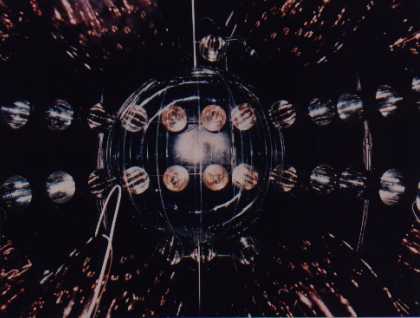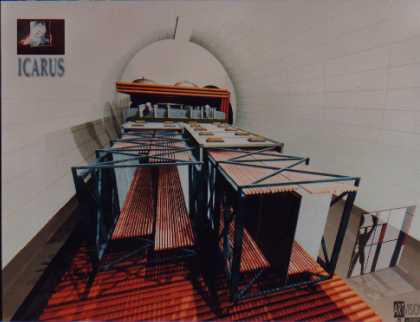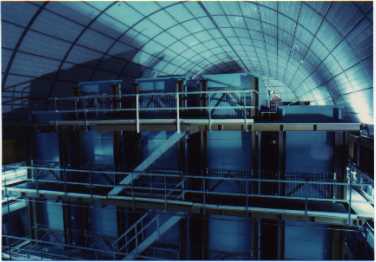The thermonuclear reactions in the solar core produce also neutrinos which filter through the sun and reach the earth with a flux of 60 billions per second and cm2. Five experiments, Homestake, Kamiokande, Gallex, Sage and Superkamiokande, observed fluxes smaller than predicted, giving rise to the “mystery of the missing neutrinos”. In order to clarify the problem new experiments will measure the neutrino energy spectrum.
Borexino uses as detector-target, an ultrapure liquid scintillator in which the solar neutrinos are detected by means of collisions with electrons; this allows the measurement in real time of the neutrino flux, of the annual modulation and of the day-night variations.
1) The prototype of the Borexino experiment at Gran Sasso.


It is based on a cryogenic wire chamber of liquid argon of high purity, which gives a high resolution tridimensional image of the reactions happening in its interior. One thus combines the features of a bubble chamber with the properties of electronic detectors. It will study solar and atmospheric neutrinos, neutrinos from supernovae, neutrino oscillation phenomena using the muon neutrino beam from CERN to Gran Sasso.
2) Project of one 600 t ICARUS module to be installed at Gran Sasso.
The LVD experiment at Gran Sasso is made of a large number of liquid scintillators and of streamer tubes. Its primary purposes are the detection of neutrinos emitted in stellar gravitational collapses in our galaxy, and studies of the muons of the cosmic radiation.
3) The LVD experiment at Gran Sasso.
